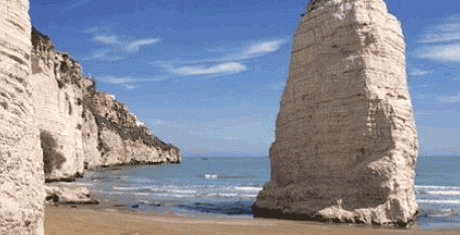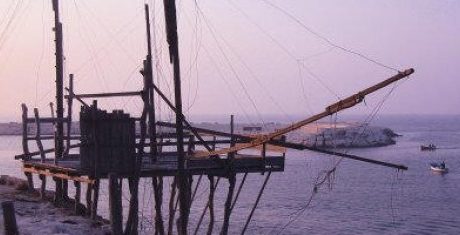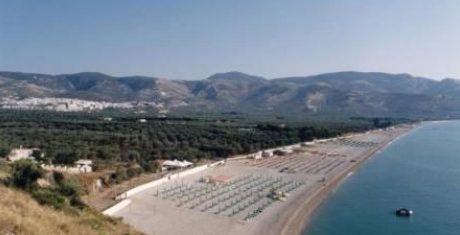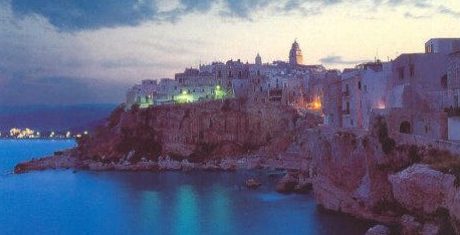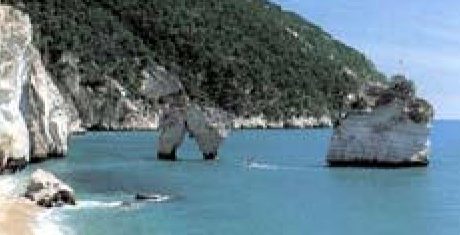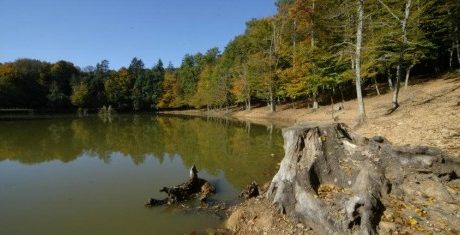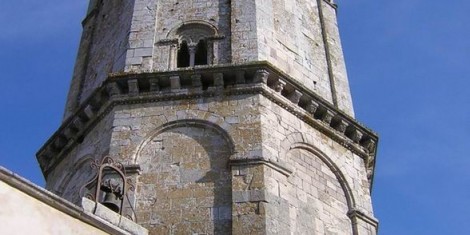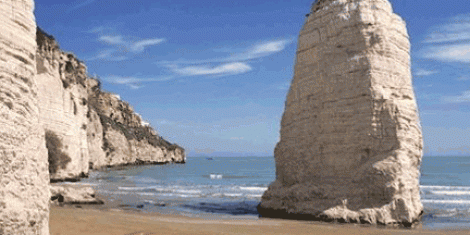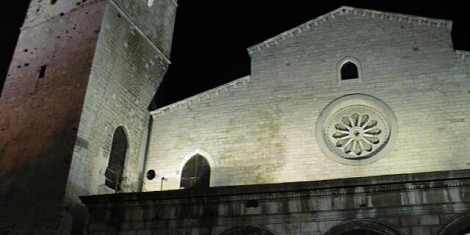MATTINATA
Who hasn’t ever wished to travel back in time?
This could be possible if you come to visit Mattinata.
Monte Saraceno. This mountain is so called because the Saracens (X century A.D.) lived there and it looks out on the sea. In this place there is a necropolis with about 500 stone graves which belonged to the Dauni.
The Benedictine Abbey of the Holy Trinity stands in the north of Mattinata at 874 m. above sea level. It rises on Monte Sacro, one of the highest summits of Gargano, which is reachable only through a path. Here we can see the ruins of the abbey which testify the importance of this Benedictine monastery.
On a hill, near Sperlonga, it is possible to admire the ruins of the Saint Stephen’s convent named “Convento della Sperlonga” .
Pizzidd is a tower on the grounds of a square. Probably it was built between XII-XVI century, when a Swabian-Angevin castle was built. It was used to defend the city of Naples.
Close to the seaport of Mattinata, visitors can see the ruins of an important house built in the Roman Age called Villa Agnuli. Through numerous archaeological discoveries, it was possible to rebuild the place, confirming in this area the presence of an ancient civilization devoted to commercial sea trades.
VIESTE
With no doubt, it is one of the oldest city of Daunia. It is situated in the middle of a wonderful area extended in 30 km. This area offers the most picturesque places of Mediterranean area in which it is possible to admire larges beaches.
Other towns like Baia dei Campi, Cala Sanguinaria, Baia di Vignanotica make Vieste famous in the world. Because of the erosion of the sea and the wind, an enormous monolith broke off the coast stones.
In 1477, when the Turks attached Naples’s Kingdom, the officer Acomat conquered Otranto and destroyed Vieste that was rebuilt only in a second time. In 1554 there was a second Turkish attack: Dragut Rais, a famous pirate, led the attack. The pillage was terrible; now this event is recollected thanks to a stone called “chianca amara”, where hundreds of Vieste’s inhabitants were decapitated.
In 1176, Pope Alexander II came to Venice in order to create an alliance with the emperor Federico Barbarossa; in the April of 1294, near Merino ( called “Old Vieste”), the Pope found a refuge. Subsequently Pope Celestino V refused to be appointing pope and so he was arrested by the governor of Vieste by order of Pope Bonifacio VIII.
Close to the castle, there’s the Basle, one of the oldest structure of Puglia in XI century. In the inner we can find the wooden statue of Saint Mary of Merino.
Places to see:
– Prehistoric settlings
– Merinum with the homonym church
– the Cathedral
– the Castle
– the historic centre
Events:
Feast of Saint George (23 April) with feast of omelette and the “palio” of horses on the beach.
FORESTA UMBRA
From 1993, this Gargano’s area, included Tremiti and the island of Pianosa, is totally tied up the National Park. The hearth of the Park can be represented by Foresta Umbra, a state wood that extends in the mountains of Gargano.
Foresta Umbra covers 15000 hectars. It is divided in two distinct sections: Umbra e Jacotenente, Ginestra e Sfilzi.
The vegetation is thick and blooming thanks to the high rain fall.
Beeh, maple, Turkey oak, elm tree are the predominant kinds. Between these kinds of trees, we can find the alaterno, the tirebinto, the euforbia arborea and other plants belonged to Mediterranean “macchia”, between them: the holm-oak and the arbutus.
Foresta Umbra is an area able to give hospitality to different kinds of fauna. We can see the famous red woodpecker, the woodpecker with white back; there are the “gatto selvatico”, the marten and the wildboar.
In the inner of the Foresta, it is possible to find 120 exemplaries of wild roe deer.



